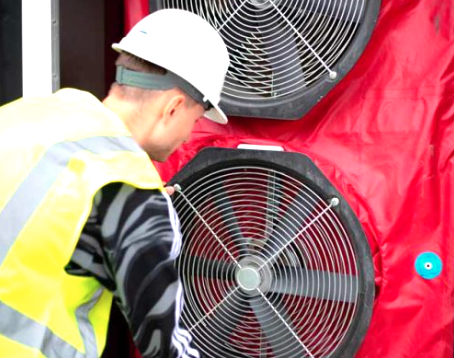Understanding the Basics of Blower Door Testing for Commercial Structures

Blower door testing is a crucial process in assessing and improving the energy efficiency and comfort of commercial buildings. This test helps identify air leaks and drafts, which can lead to significant energy loss and discomfort for occupants. Understanding the basics of blower door testing is essential for building owners, managers, and maintenance professionals looking to enhance the performance of their commercial structures at https://energyincentivesinc.com/ .
What is Blower Door Testing?
Blower door testing is a diagnostic technique used to measure the airtightness of a building. It involves mounting a powerful fan in an exterior doorway and depressurizing or pressurizing the building to measure the airflow rate required to maintain a certain pressure difference. This test helps determine the air leakage rate of the building envelope, which includes walls, windows, doors, and other penetrations.
How Does Blower Door Testing Work?
During a blower door test, the building's HVAC system is turned off, and all windows and doors are closed. The blower door fan is then installed in a doorway, and the building is depressurized or pressurized to a standard pressure difference, typically 50 pascals. The fan measures the airflow rate needed to maintain this pressure, which is used to calculate the air changes per hour (ACH) at 50 pascals, a standard measure of a building's airtightness.
Why is Blower Door Testing Important for Commercial Structures?
Blower door testing is important for commercial structures for several reasons. First, it helps identify areas of air leakage, which can lead to energy loss and increased utility bills. By pinpointing these leaks, building owners and managers can take steps to improve the building's energy efficiency and comfort. Additionally, blower door testing can help ensure that a building meets code requirements for airtightness and ventilation, promoting a healthy indoor environment for occupants.
Benefits of Blower Door Testing for Commercial Buildings
Blower door testing offers several benefits for commercial buildings. It helps identify and prioritize areas for air sealing, which can lead to energy savings and improved comfort. Additionally, blower door testing can help verify the effectiveness of air sealing measures and ensure that a building meets energy efficiency standards. Overall, blower door testing is a valuable tool for improving the performance of commercial buildings and reducing their environmental impact.
How to Prepare for Blower Door Testing in Commercial Buildings
Before conducting a blower door test in a commercial building, it's important to prepare the space to ensure accurate results. This includes closing all windows and exterior doors, sealing off any non-permanent vents or openings, and ensuring that the HVAC system is turned off. Additionally, it's recommended to perform the test under typical weather conditions to simulate real-world conditions accurately.
Interpreting Blower Door Test Results for Commercial Structures
Once the blower door test is complete, the results can provide valuable insights into the building's airtightness and potential areas for improvement. The air changes per hour (ACH) at 50 pascals can help determine the overall airtightness of the building, with lower ACH indicating better airtightness. Additionally, a thermographic inspection can be used in conjunction with the blower door test to identify specific areas of air leakage visually.
Conclusion
In conclusion, blower door testing is a valuable tool for assessing and improving the energy efficiency and comfort of commercial buildings. By understanding the basics of blower door testing and interpreting the results correctly, building owners and managers can identify areas for improvement and take steps to enhance the performance of their structures. Overall, blower door testing is an essential part of maintaining a healthy, energy-efficient, and comfortable indoor environment for occupants of commercial buildings.
- Art
- Causes
- Crafts
- Dance
- Drinks
- Film
- Fitness
- Food
- Oyunlar
- Gardening
- Health
- Home
- Literature
- Music
- Networking
- Other
- Party
- Religion
- Shopping
- Sports
- Theater
- Wellness


